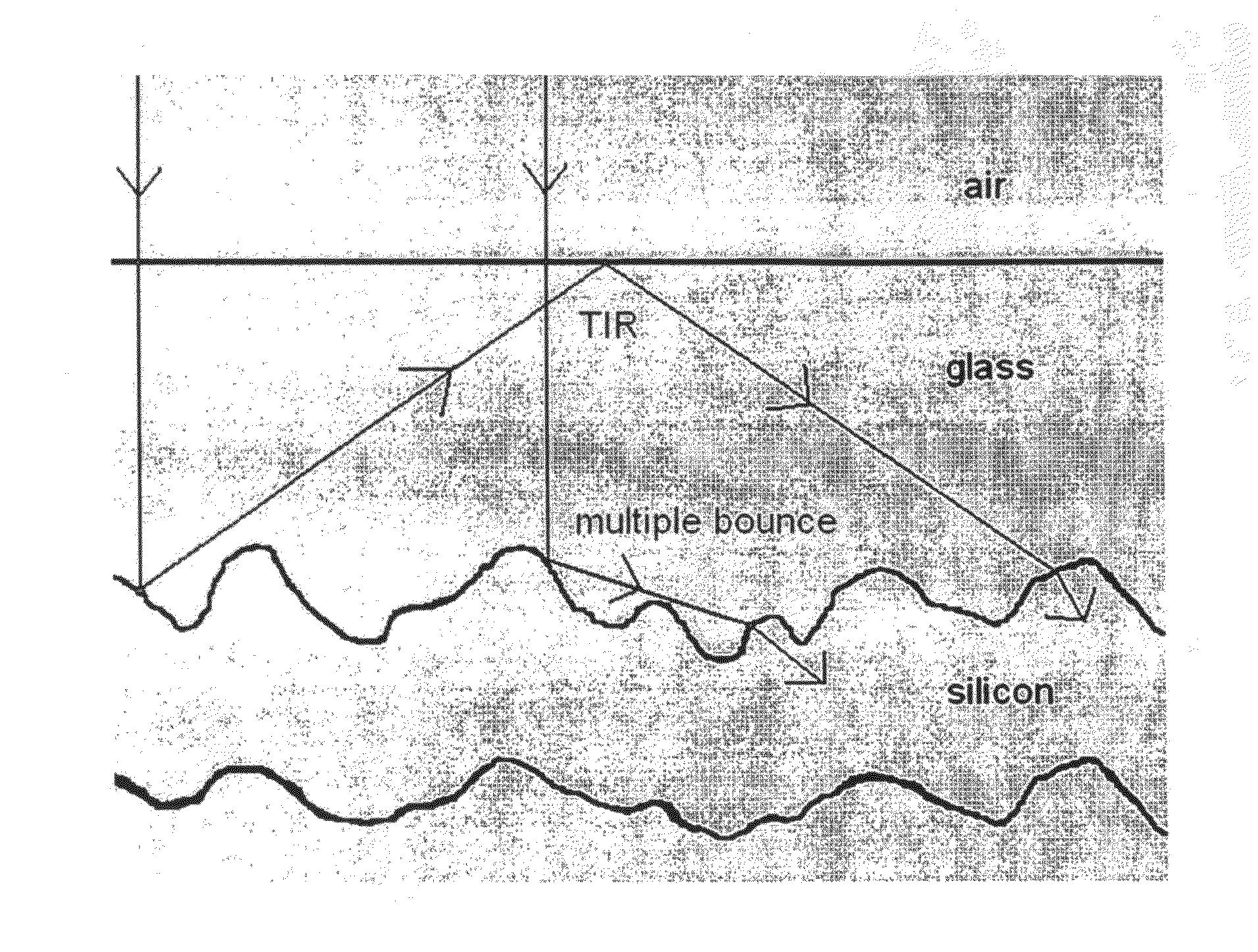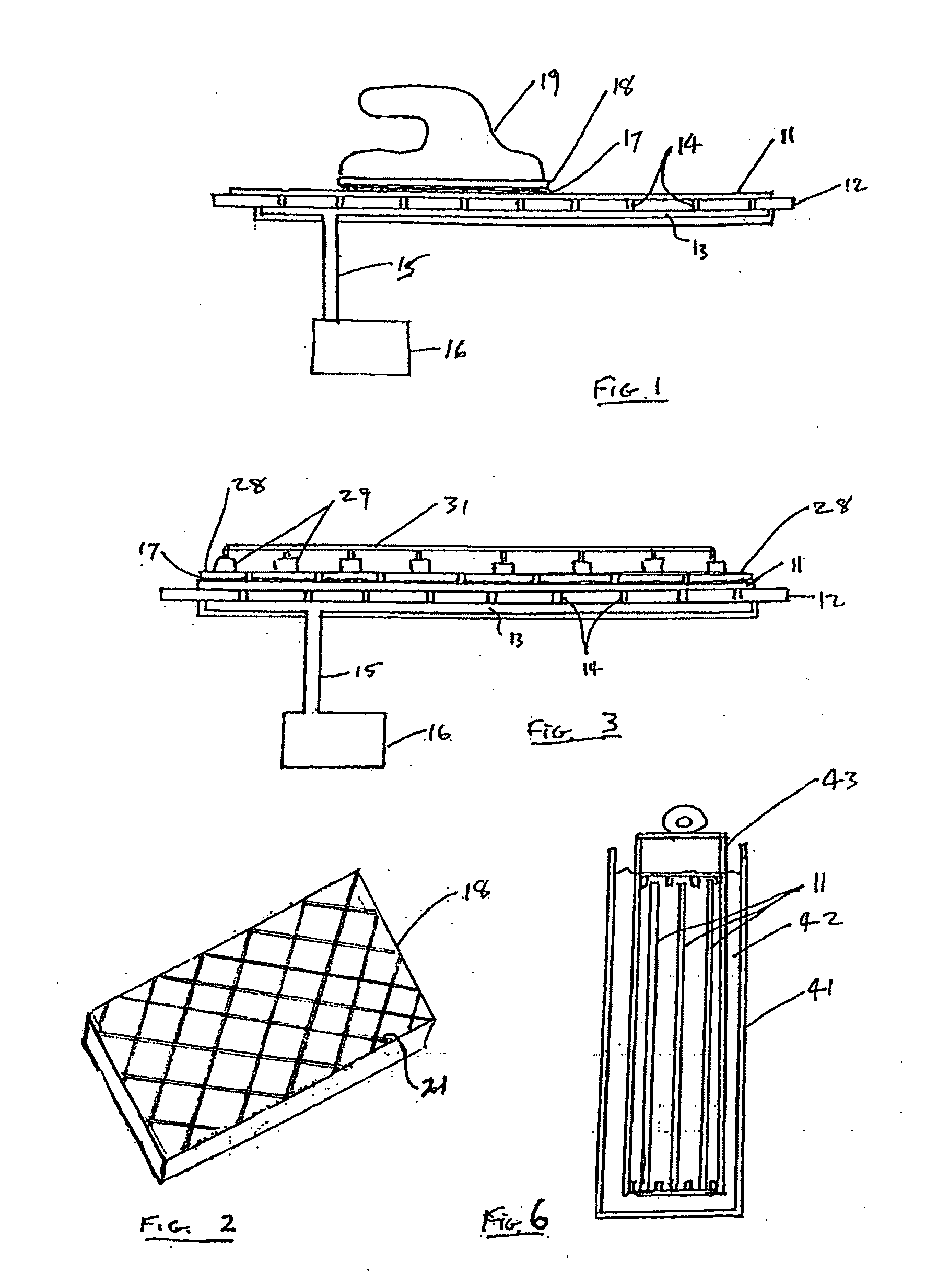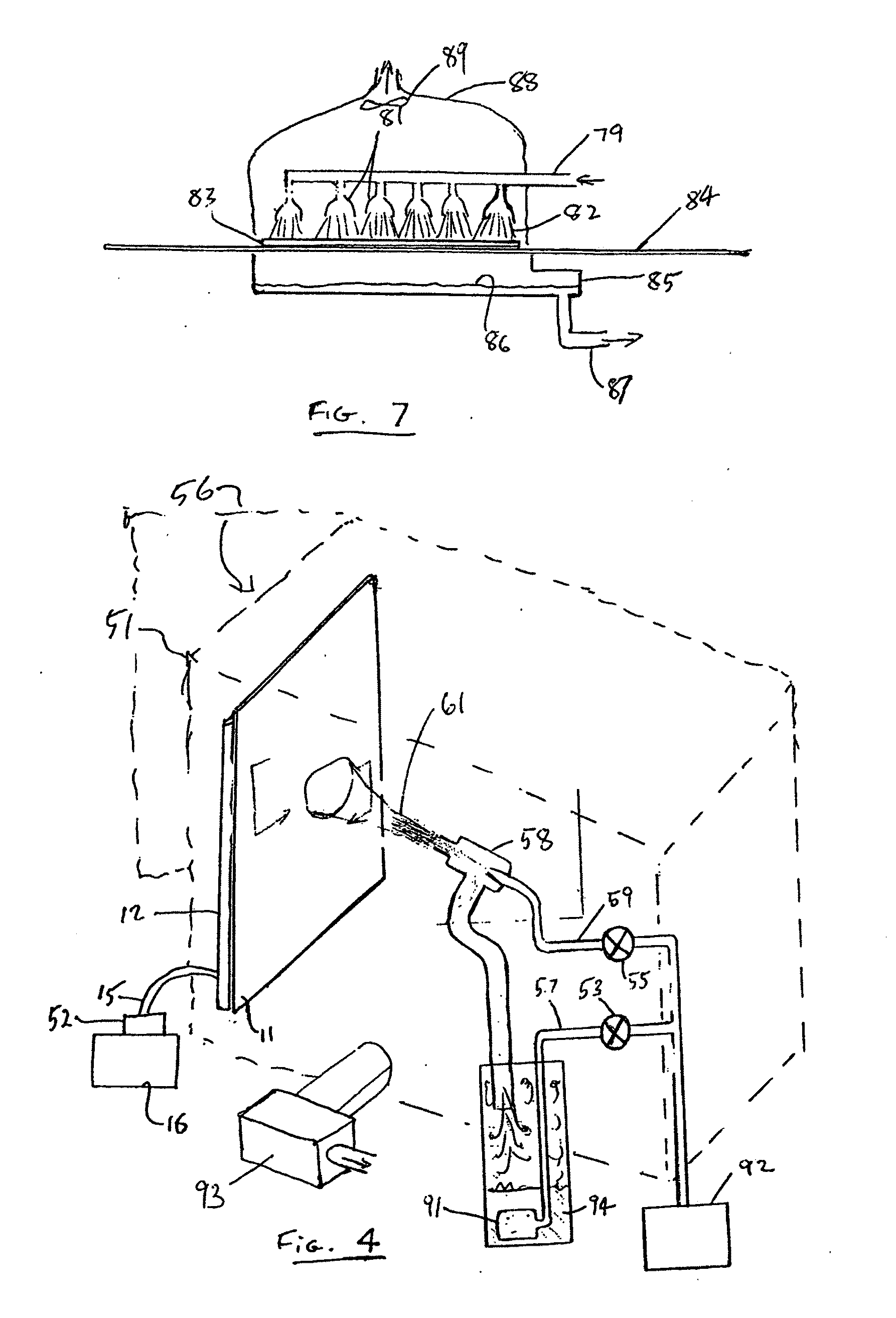Abrasion-etch texturing of glass
- Summary
- Abstract
- Description
- Claims
- Application Information
AI Technical Summary
Benefits of technology
Problems solved by technology
Method used
Image
Examples
Embodiment Construction
[0037]A simple method will be described for texturing borosilicate glass (BSG) substrates for thin film crystalline silicon on glass (CSG) photovoltaic modules. The method involves forming micro-fractures on a surface of the glass substrate by impacting or abrading one side of the as-supplied glass (for example, using a sand blaster with 800 mesh silicon carbide powder or lapping with a slurry of 800 mesh silicon carbide powder in water), followed by a cleaning step and an acid etch (preferably in 5% [w / w] HF acid). (The generic term “sand-blasting” is used here even though the abrasive used is not sand). The acid etch time is optimised to open the microcracks and remove fractured glass inclusions whilst retaining a sufficiently fine texture for good light trapping (optimised at 12 minutes when performed after abrasion with an 800 mesh abrasive). Subsequently, barrier layers and silicon are deposited onto the textured glass and formed into PV modules. Abrasion-etch textured glass su...
PUM
| Property | Measurement | Unit |
|---|---|---|
| Fraction | aaaaa | aaaaa |
| Fraction | aaaaa | aaaaa |
| Mesh size | aaaaa | aaaaa |
Abstract
Description
Claims
Application Information
 Login to View More
Login to View More - R&D
- Intellectual Property
- Life Sciences
- Materials
- Tech Scout
- Unparalleled Data Quality
- Higher Quality Content
- 60% Fewer Hallucinations
Browse by: Latest US Patents, China's latest patents, Technical Efficacy Thesaurus, Application Domain, Technology Topic, Popular Technical Reports.
© 2025 PatSnap. All rights reserved.Legal|Privacy policy|Modern Slavery Act Transparency Statement|Sitemap|About US| Contact US: help@patsnap.com



